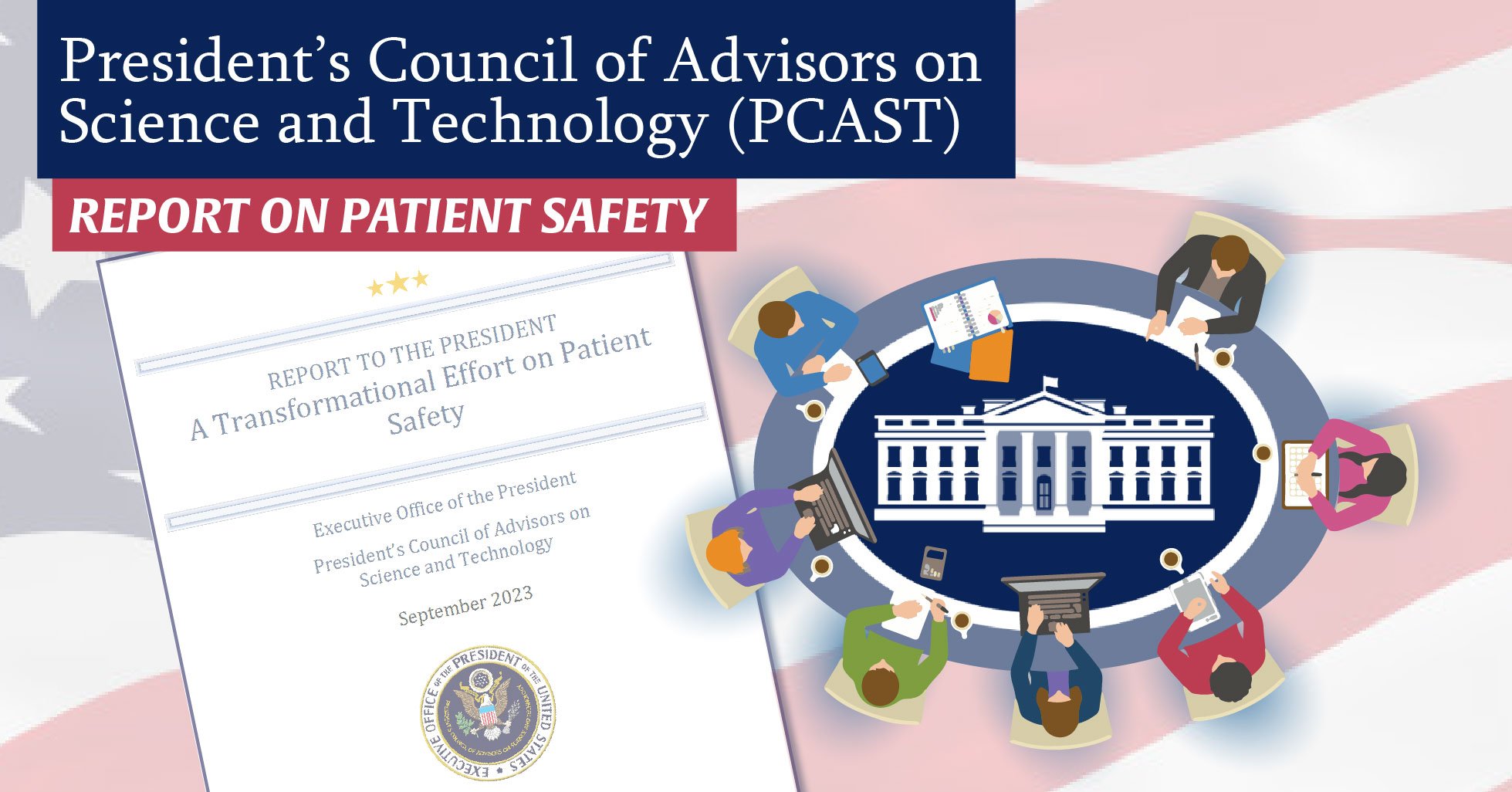The PCAST Patient Safety Report Unpacked (Part 2): All About Evidence-Based Solutions

 In our last post, we introduced the President's Council of Advisors on Science and Technology (PCAST) report on patient safety. Today we will focus on how hospital-associated infections are specifically addressed in the report and the report's emphasis on evidence based solutions to address HAIs and other preventable harm to patients.
In our last post, we introduced the President's Council of Advisors on Science and Technology (PCAST) report on patient safety. Today we will focus on how hospital-associated infections are specifically addressed in the report and the report's emphasis on evidence based solutions to address HAIs and other preventable harm to patients.
According to the research cited by the PCAST report, the leading "harms from unsafe care" are medication errors, hospital-associated infections, surgical injuries, diagnostic errors and delays, medical device malfunctions, and "failure to rescue," that is, failure to recognize and respond to health emergencies in time to reverse them. The report stresses that evidence-based solutions exist for all these risks, but due to lack of standardization in adoption, these practices are not uniformly in place.
A key recommendation presented in the report is the identification of high-priority harms, the patient safety issues already tracked by the Agency for Healthcare Research and Quality (AHRQ) as well as others causing significant mortality and injury. Hospital-associated infections are included in their list of high-priority harms, and the report also recommends generating data on additional infections from electronic health records.
Among the local and national organizations working to reduce HAIs is the Society for Healthcare Epidemiology of America (SHEA). In a statement about the PCAST report, SHEA emphasizes that the professional organization "believes infection prevention programs and investments in a robust patient safety research agenda will play a pivotal role in the execution of these recommendations." Indeed, HAIs still account for upwards of 75,000 deaths each year, with hundreds of thousands of cases resulting in longer hospital stays, disability, chronic conditions, and reduced quality of life.
While the report leaves opportunities for identifying any evidence-based solution that works, there is an overall emphasis on computer technology interventions, including using existing electronic records data to better diagnose, track, and treat patients as well as report to federal agencies for accountability and incentives. While it emphasizes AI and technology in its examples of successful strategies that could reduce hospital-associated infections rely, the report does not emphasize the reality that those same strategies still rely heavily on human processes regulation through checklists and protocols.
Let's look at one important passage in the report:
"However, systemic improvements in quality of care–which depend on various factors including institution type and leadership, hospital resources, staffing, training and wellness, and workplace culture–have proven difficult to bring to scale on a volunteer basis, or to sustain. PCAST’s recommendations propose solutions for accelerating the adoption of evidence-based solutions, while providing hospital systems and staff with the resources necessary to do so."
PCAST recommends a two-prong effort involving identification of evidence-based solutions as well as helping facilities adopt these solutions in a sustainable way. We hope they do not overlook the interventions that do not rely so heavily on human processes, such as biocidal surfaces.
Biocidal materials, which to date are copper-impregnated EOScu and copper alloys, have undergone EPA registration and significant field testing and have the ability to immediately reduce HAIs - without the need for investment in IT infrastructure, additional work for staff, or new protocols or tracking. EOScu, for example, has over ten years of laboratory and field testing resulting in consistent reductions in bioburden and HAIs, in additional to EPA registration for public health claims.
If national health agencies are looking for evidence-based solutions to reducing hospital associated infections, then they need to consider preventative measures including biocidal materials. Human processes, no matter how structured, standardized, and communicated, are fallible. Installation of biocidal materials means that regardless of human behavior, disease-causing pathogens are actively and continuously killed all day long, every day, even after recontamination, for the life of the product. It may not be as flashy as a UV robot or as technologically complex as a AI-assisted diagnostic software program, but it is able to accomplish what they cannot - the consistent reduction of disease-causing pathogens in the patient environment.
What do you think about the recommendations presented in this PCAST report? Share your thoughts in the comments below.
![EOScu Logo - Dark - Outlined [07182023]-01](https://blog.eoscu.com/hubfs/Eoscu_June2024/Images/EOScu%20Logo%20-%20Dark%20-%20Outlined%20%5B07182023%5D-01.svg)




